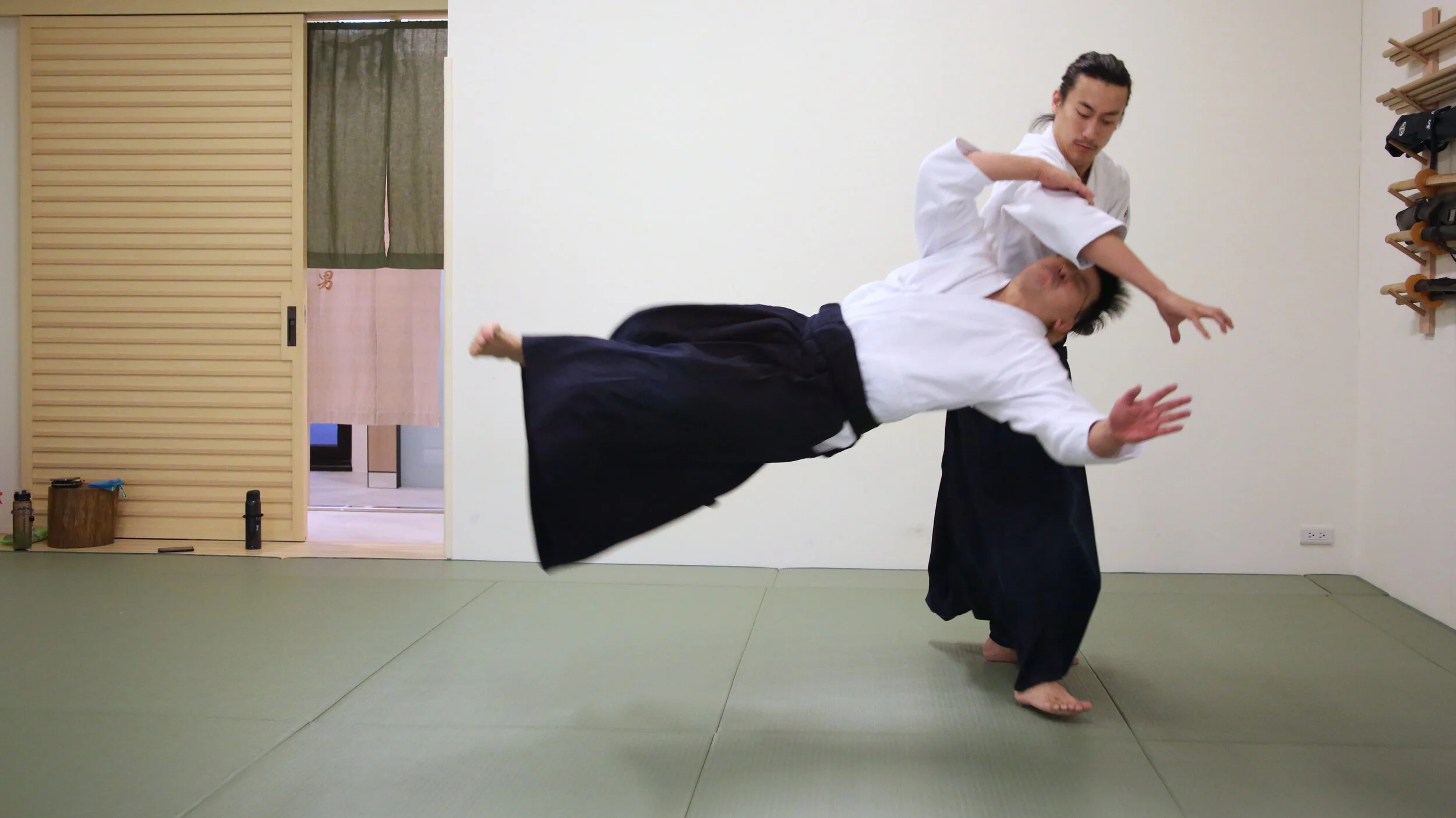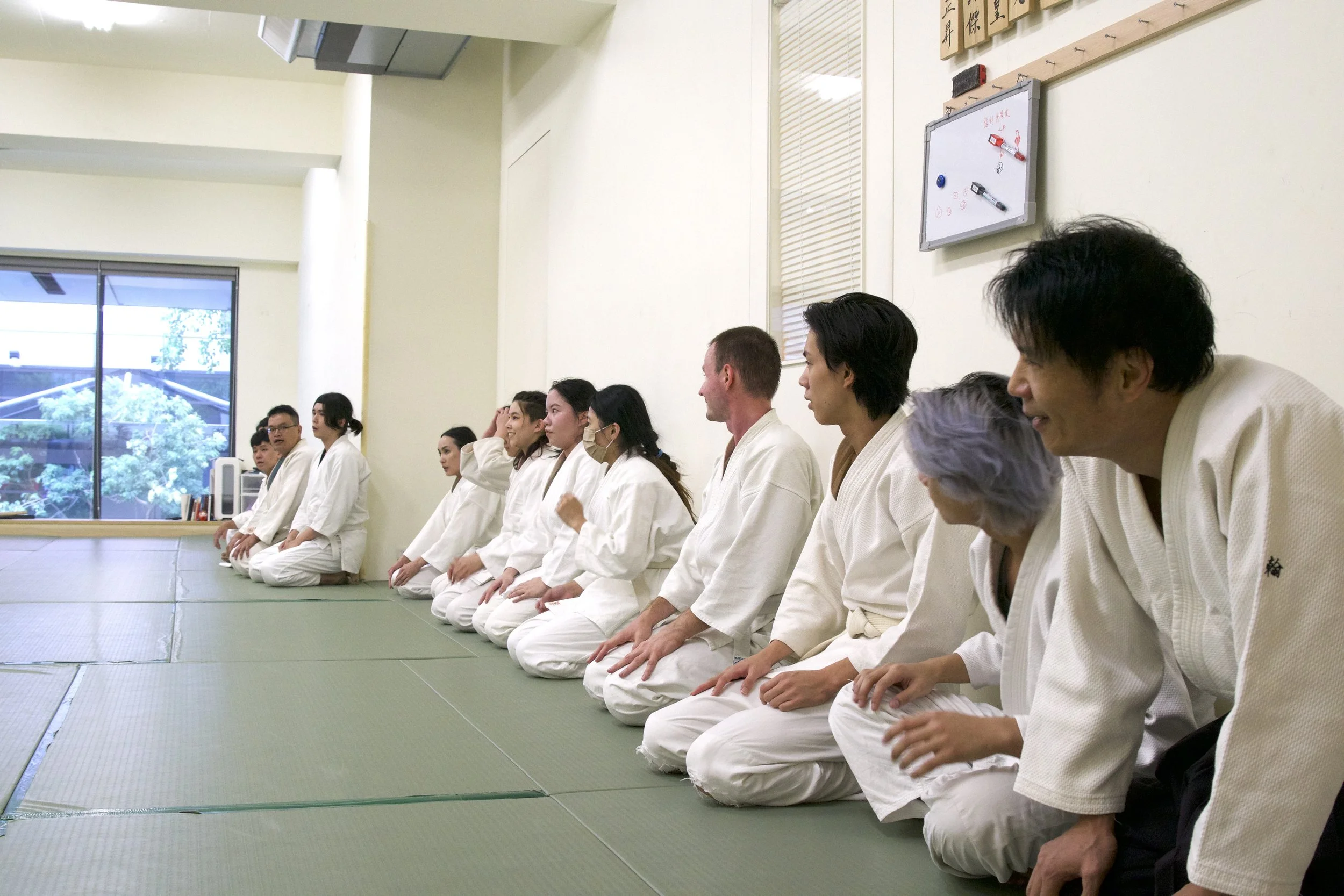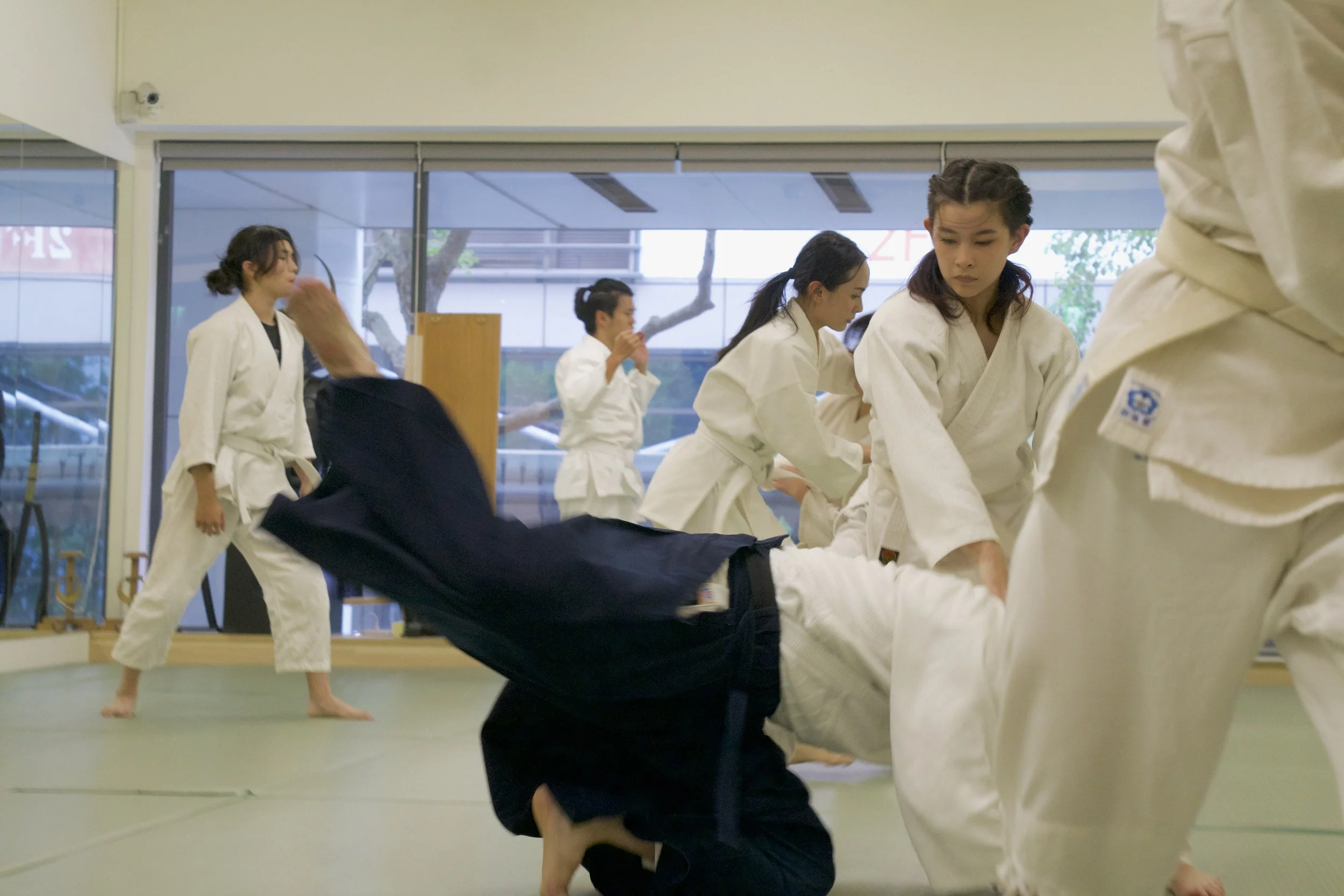




About Aikido
About Aikido
Aikido
Morihei Ueshiba, "O-Sensei"
Morihei Ueshiba (植芝 盛平, December 14, 1883 – April 26, 1969) was a martial artist and founder of the modern Japanese martial art of Aikido. He is often referred to as "the founder" Kaiso (開祖) or Ōsensei(大先生/翁先生), "Great Teacher". Ueshiba envisioned aikido not only as the synthesis of his martial training, but as an expression of his personal philosophy of universal peace and reconciliation. He developed aikido primarily during the late 1920s to the 1930s based on the older martial arts that he had studied.
Today, the largest aikido organization is the Aikikai Foundation, which remains under the control of the Ueshiba family. However, aikido has many styles, mostly formed by Morihei Ueshiba's major students. These major styles of aikido are each run by a separate governing organization, have their own headquarters (本部道場 honbu dōjō), and have an international breadth.
Aikido is often translated as "the way of unifying (with) life energy" or as "the way of harmonious spirit". Ueshiba's goal was to create an art that practitioners could use to defend themselves while also protecting their attacker from injury.
Aikido techniques consist of entering and turning movements that redirect the momentum of an opponent's attack, and a throw or joint lock that terminates the technique.
The word "aikido" is formed of three kanji:
- 合 – ai – unifying, joining, harmony
- 気 – ki – spirit, energy, mood, morale
- 道 – dō – way, path
Therefore, from a purely literal interpretation, aikido is the "Way of combining forces", in that the term aiki refers to the martial arts principle or tactic of blending with an attacker's movements for the purpose of controlling their actions with minimal effort. One applies aiki by understanding the rhythm and intent of the attacker to find the optimal position and timing to apply a counter-technique

Yoshimitsu Yamada
Yoshimitsu Yamada
Yoshimitsu Yamada
Yoshimitsu Yamada was born on February 17th, 1938 in Tokyo. His father’s cousin, Tadashi Abe, began practicing aikido in 1942. This coincidence undoubtedly affected the later life of Yoshimitsu, who had his first contact with O-Sensei when he was only a few years old during a martial arts demonstration at the Abe family’s home. This meeting made a lasting impression on young Yoshimitsu. He remembers it as if it were yesterday: at first glance, O-Sensei seemed like a nice, calm, elderly man, but he became a completely different person on the mat – an uncatchable and mysterious martial arts master.
The experience undoubtedly heavily influenced eighteen-year-old Yoshimitsu’s decision to join Hombu Dojo as an uchi-deshi in 1955, which was made possible thanks to a recommendation by Tadashi Abe, since Yoshimitsu had never before trained in martial arts. His first day as an uchi-deshi was also his first day on the mat. He immediately made friends with his sempai Nabuyoshi Tamura and Sadateru Arikawa.
At the time, Hombu Dojo was a completely different place than it is nowadays. The Ueshiba family’s house was part of the dojo, and Morihei himself quite often, although irregularly, appeared on the mat.
Seiichi Sugano, Nobuyoshi Tamura, and Yoshimitsu Yamada at Hombu Dojo
The training was demanding and life at the dojo had an almost ascetic nature. This was due to the difficult economic situation in the country after World War II. Life at Hombu Dojo did not differ greatly from the general quality of life in Japan at the time. The building was not heated, so in winter the temperature would regularly drop below zero degrees Celsius, and in summer the heat would strike mercilessly. Deshi did not have their own quarters or too many personal items, their life was subject to the dojo’s rhythm, and private moments were very rare. Each uchi-deshi had to perform certain tasks and take private lessons. With time, the student body grew – Yasuo Kabayashi, Kazuo Chiba, Mitsunari Kanai and Seichi Sugano joined, and along with Yoshimitsu became a tight group of friends.
Despite their intense commitment to training and dojo life, they all secretly dreamt of leaving Japan, which, after the American occupation, opened itself to the world. Yoshimitsu Yamada was chosen to teach aikido at American military bases as a delegate of Hombu Dojo. He honed his English skills and learned about America’s culture and traditions, which fascinated him, and his desire to go to the USA grew.
Yoshimitsu Yamada throwing Steve Pimsler (7th dan) with a Kotegaeshi
Yoshimitsu Yamada spent about seven years at Hombu Dojo. Since that time, the set of techniques taught has changed significantly, and aikido itself has become a slightly different martial art than what the first uchi-deshi of Morihei Ueshiba were taught. Despite this evolution, Yamada Sensei tries to pass on what he learned during that time. Orthodox in his teaching, he teaches basic techniques, which he tries not to modify. He believes that a solid foundation is necessary for proper development. He is an enthusiast of intensive training as the means for both physical and spiritual development. He does not oppose hard training, according to budo spirit, however he does not excuse brutality or stupidity on the mat. He still travels intensively, visiting almost all continents every year. He is Chairman of the American Aikido Federation and the South American Aikido Federation, as well as the author of several books and DVDs on aikido.
When asked what he is most proud of, Yamada Sensei lists the following: his own dojo, the fact that he contributed to the development and spreading of aikido across the world, and that he helped so many people become great aikido teachers.

Ed Lin
Ed Lin
Ed Lin
Chief Instructor
Ed Lin began practicing Aikido at the New York Aikikai in 2011 under Yamada Sensei. During a 10-month period as an uchi-deshi (live-in student), he trained directly with Yamada Sensei and senior instructors including Harvey Konigsberg, Donovan Waite, Mike Abrams, Steve Pimsler, Robert Workoff, and Hal Lehrman (all 7th Dan, Shihan).
After this intensive training period, Yamada Sensei spoke with Ed about opening a dojo in Taiwan, an opportunity Ed eagerly accepted. In 2021, Ed earned his 3rd Dan.
At Taipei Budokai, Ed emphasizes technical proficiency, personal growth, and building a strong community. He believes Aikido is more than a martial art—it’s a way to develop discipline, respect, and resilience. Ed encourages his students to challenge themselves while ensuring classes are safe, engaging, and accessible to everyone.

Bibiana Penagos
Bibiana Penagos
Bibiana Penagos
Bibiana holds a 5th-degree black belt. She began practicing Aikido as a teenager in Bogota, Colombia. At the age of 17, she was captivated by the grace and power of Yoshimitsu Yamada Shihan’s technique and soon became his student, regularly traveling to New York to train at his dojo, NY Aikikai. At 23, she spent 6 months there as an uchi deshi (live-in student). In addition to her ongoing visits to NY, she has also trained in various dojos, including the Aikido World Headquarters (Hombu), and participated in numerous seminars in the United States, Europe, Asia, and South America. Bibiana has received instruction from renowned master instructors (Shihan) such as the current Doshu, Moriteru Ueshiba, Yoshimitsu Yamada, Nobuyoshi Tamura, Kazuo Chiba, Seichi Sugano, Hayato Osawa, Peter Bernath, Donovan Waite, among others.
Bibiana currectly teaches at Taipei Budokai every Wednesday evening.






